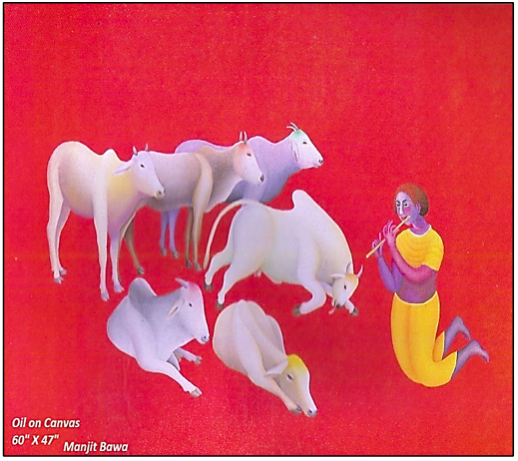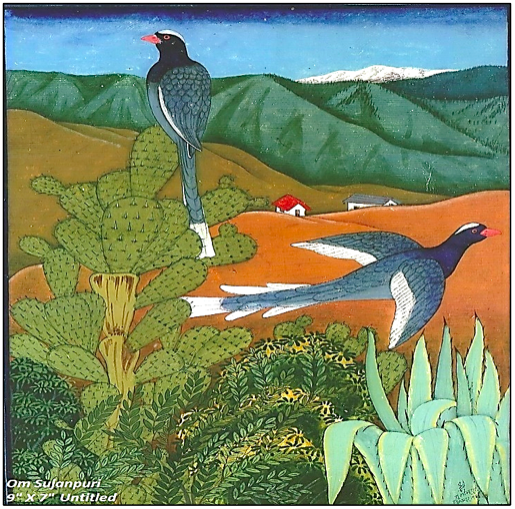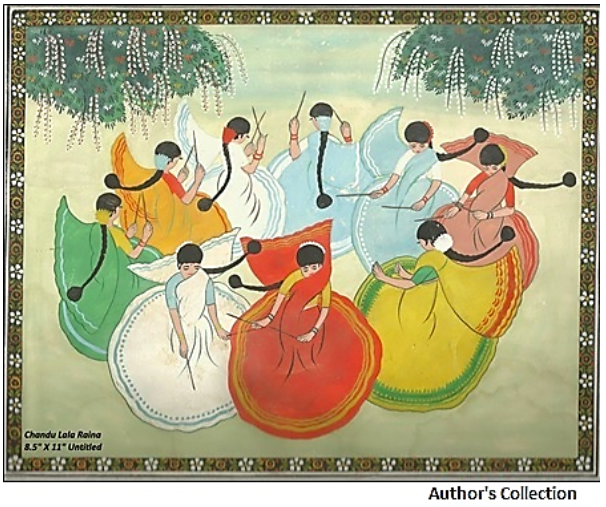
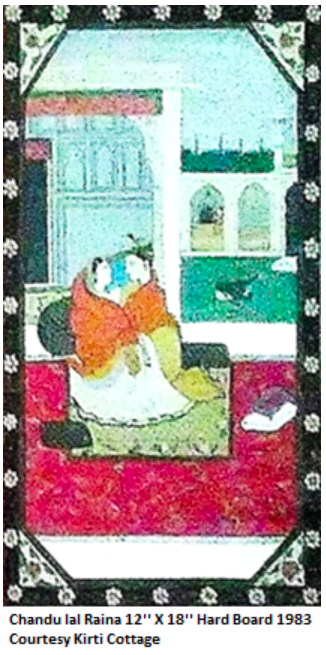
The pictorial art of Kangra is one of the finest gifts of India to the art-world, named after Kangra, Himachal Pradesh, a former princely state, which patronized the art. The influence of late Mughal art is evident in the new Kangra style.
During the mid-18th century, a number of artist families trained in the late Mughal style apparently fled Delhi for the hills in search of new patrons and more settled living conditions. This great art originated in Guler State, a small hill state in the Lower Himalayas when a family of Kashmiri painters trained in Mughal painting Style sought shelter at the court of Raja Dalip Singh (r. 1695-1741) of Guler. The rise of Guler Paintings started in what is known as the early phase of Kangra Kalam. Maharaja Sansar Chand Katoch (r.1776-1824) was a great patron of Kangra art.
The new arrivals mingled with the local artists and were greatly influenced by the atmosphere of the hills. The Guler-Kangra art is the art of drawing and the drawing is precise and fluid, lyrical and naturalistic. In these styles the faces are well modelled and shaded so judiciously that they possess almost porcelain-like delicacy.
The paintings were naturalistic and employed cool, fresh colors. The colors were extracted from minerals, vegetables and possessed enamel-like lustre. Verdant greenery of the landscape and springs were the recurrent images on the miniatures. Towns and house clusters often appeared in the back drop.
Today, using digital tools, these small scenes can be enhanced and reframed, and are found to be so detailed as to stand alone. The focal theme of Kangra painting is Shringar (the erotic sentiment). The subjects seen in Kangra painting exhibit the taste and the traits of the life style of the society of that period. The sentiment of love remained the inspiration and the central theme of Pahari paintings Set against an architectural background with walls, balconies and windows.
Great attention is paid to detail. The foliage depicted is vast and varied. This is made noticeable by using multiple shades of green. The Kangra paintings feature flowering plants and creepers, leafless trees and rivulets. The Kangra artists adopted various shades of the primary colors and used delicate and fresher hues. For instance, they used a light pink on the upper hills
to indicate distance. Kangra paintings depict the feminine charm in a very graceful manner. Facial features are soft and refined. The female figures are exceptionally beautiful.
Later Kangra paintings also depicted nocturnal scenes and storms and lightning. The paintings were often large and had complex compositions of many figures and elaborate landscapes. Towns and house clusters were often depicted in the distance.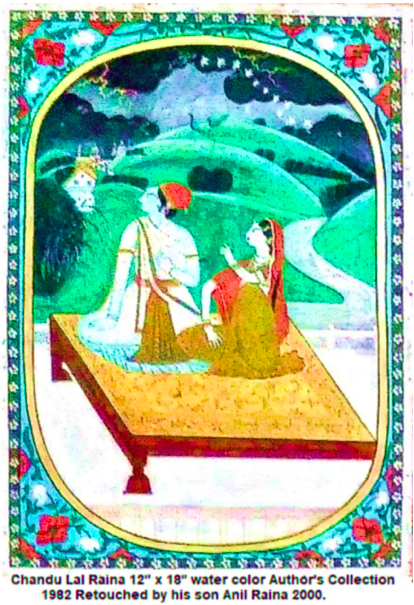
The Kangra painters used colors made of vegetable and mineral extracts. They employed cool and fresh colors. Kangra paintings are known for the lyrical blending of form and color. The shape and contours of eyes, body parts, landscape, flora and fauna play a major role. The sharp expressive eyes in this form of painting are called ‘kamal nayan’ (lotus-shaped). Though artists like Chandu Lal Raina, Om Sujanpuri O.P Tak and Anupriya have carried forward the tradition, youngsters are showing an interest too.” Though the main centre of Kangra paintings are Guler, Basohli, Chamba, Nurpur, Bilaspur and Kangra. Later on this style also reached Mandi, Suket, Kulu, Arki, Nalagarh and Tehri Garhwal (represented by Mola Ram), and now are collectively known as Pahari painting.
Most of the works follow the technique of Kangra School but with present modern themes, some artists have also experimented with modern painting. Contemporary artists are taking up the Kangra style. Fortunately, Sri Krishna’s pastimes are eternal, and will ever serve as inspiration to the artists taking up this noble work. Manjit Bawa’s work presents a refreshing contrast. One 0f the paintings, in my collection, made by Chandu Lal Raina was renovated by his son Sh. Anil Kumar Raina, at Dharamshala, way back in the year 2000.
Om Sujanpuri also tried his hand in almost all styles of Pahari schools. He is credited with a number of state awards, Himachal Gaurav and Kalidasa from Madhya Pradesh; and also from Punjab Lalit Kala Academy. He is also working on folk songs recreating them into paintings. Madam Manorma, his wife, is critical of the recognition by their native district and the home state; outsiders are rather more appreciative of his works.
Prof. (Er.) Chander P Mahajan is an art critic & a free lance journalist. The Environmentalist stays in Shimla and Dalhousie, Himachal Pradesh, India.


